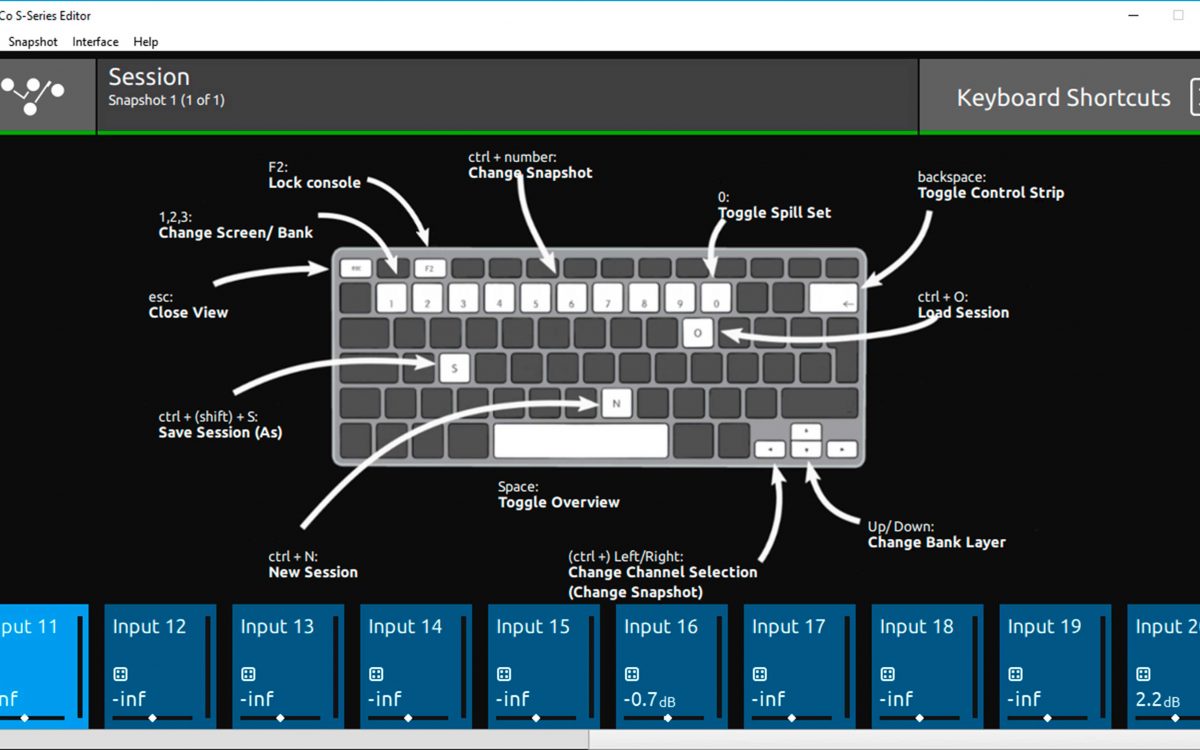MakeCode is typically accessed at https://arcade.makecode.com/ where create, modify, and run your projects while you’re online. You can can use MakeCode when you’re offline too. Here are some ways you can work with MakeCode offline:
Offline app
The MakeCode Arcade editor is available as an app which you can install on a Windows or Mac OS Computer. Once installed, the MakeCode Offline App lets you create, run, and download your projects to your device. It works the same as the Web application does in your browser, but it’s a stand-alone application that will work when a connection to the internet is restricted or not available.
123 Offline Editor jobs available on Indeed.com. Apply to Editor, Editor-in-chief, Business Development Manager and more! Offline Editor Features: - 6 power-ups - brush, straight and curved line tools for drawing - eraser - grid tool - 2 vehicles - import tracks to continue drawing or practice racing offline - export tracks to save for future edits or to upload online at FreeRiderHD.com - over 20 keyboard shortcuts - share exported track codes with friends Free. To manually select files to save offline: Follow the steps above to turn on offline access in Google Drive. Open the Google Docs, Sheets, or Slides home screen. On the file you want to use offline, click More. Click Available offline. A check mark will appear in the bottom left corner to show that the file is available offline.
Web application
MakeCode is an HTML5 web application that’s automatically cached locally (saved to your computer or device) when first viewed in your browser. After the web app has loaded you will have everything you need to continue working without an internet connection. If you decide to add an extension, it’s possible that you’ll again need to connect to the internet to allow the code in the new extension to compile.
How does it work?
The MakeCode editor, like other web applications, is created using HTML, JavaScript, and some style information. These parts of the editor are all downloaded as various files to your browser. The editor is designed to do as much of work as possible in the browser itself without needing to constantly have contact with the web server. To do this, it asks the browser to download and keep a number of service files which give the editor the same features provided by the MakeCode web site. This allows the editor to fully function even when disconnected from the internet, no longer having contact with the web site.
When the editor loads in your browser it tells it to keep the MakeCode service files in the browser’s application cache. The cache is data storage area managed by the browser where a web application can keep additional files it needs.
Cloud compilation
When running on actual hardware, the code you write in JavaScript is compiled into instructions which are understood by the processor on the board. Some of the files saved in the application cache are compiled code for the features on the board. To use the hardware features on your board, the editor provides blocks for them that you include in your programs. These blocks are available to your program when they’re included as part of an added extension. The code in an extension is in TypeScript and sometimes also in C++. It’s necessary to compile this code at least once on the server and then have the compiled files returned to the browser to get cached. Once cached, the editor can use them together with your code, even when offline. This one time compile process is called cloud compilation.
Extensions
Extensions are, by default, downloaded from internet so typically you need to be connected to use them. If you want to use a particular extension while offline, you will need to follow these steps:
Download the extension
- While connected to internet, create a new project in the editor and then add the extension you need to use. You don’t need to add any program code to the project.
- Click
|Save|(the project save icon), or|Download|, and store the downloaded file. Save it to a folder location that you will remember and have access to when offline.
This file contains the full source code of the extension, allowing you to use the extension while offline.

Import the offline extension
- While offline, go to the
|Extensions|dialog and click on Import file. - Import the file you downloaded and saved earlier when you were online.
Limitations
Not all MakeCode editors support importing extensions as a source file. If importing is enabled, you will see an Import File button in the extensions dialog.
Extensions that use C++ are not supported yet in a full offline scenario as they require cloud compilation.
Hosting MakeCode locally
The open source editions of MakeCode can be served locally on your own computer. More experienced users can download the entire PXT Toolchain and use the command line interface (CLI) to compile and deploy scripts locally. PXT provides a great out-of-the-box experience when used with Visual Studio Code, a lightweight cross-platform code editor. See the https://github.com/microsoft/pxt-arcade project page for instructions on setting up a MakeCode local server.
Edit this page on GitHub
Edit template of this page on GitHub
Edit template of this page on GitHub
Edit template of this page on GitHub
Program builder software
Scratch is a reference and education software developed for ages 8 to 16 but receives use by all ages. The software teaches you to build and create your own programs and applications.
Learn to write code
Implement basic commands to animate your character. Command options include moving, dancing, singing, and interacting with other characters.
Offline Editor
Learn to code at any age with Scratch. It is great for school, home, library, and community center settings. Scratch is built as a tool to teach any and everyone about basic coding. It allows for the creation of animations, games, and other interactive content. Essential concepts about coding languages are highlighted to improve learning capabilities. You will grow essential programming skills such as creativity, co-working on projects, and logical reasoning.
You can implement basic commands to animate your characters. Command options include moving, dancing, singing, and interacting with other characters. The process is simpler than industry-standard languages such as C++, Javascript, and Swift.

Offline Editor Glossier
Programming in Scratch involves moving around blocks similar to puzzle pieces. You can create images with unique responses depending on your mouse movements. You can insert audio clips and sound effects to create a more enticing project.
Starting to use Scratch is easy, but it gradually becomes complicated as you’ll discover many features to add to your projects. Share your completed work online as you distribute it in the Scratch community and social media sites such as Facebook and Discord.
By sharing your creations, you’ll receive feedback and discover new techniques that have benefited other users. You’re able to work on your project with or without an internet connection, making editing an excellent choice for when you’re on the go.
Where can you run this program?
Scratch is available for both Windows and MacOS systems but unfortunately does not have any version available for Linux.
Is there a better alternative?
No, Scratch is developed by MIT’s Media Lab and fulfills its purpose of teaching others to code through a simple process. Once you’ve learned to code move to GDevelop and create a full feature game.
Our take

Scratch is fantastic software to use when learning to code, especially for young people and beginners who don’t know where to start learning.
Should you download it?
Yes, if you’re looking to learn to code or want to improve your child’s computer literacy, this is the ideal software to use.
Highs
- Intuitive learning process
- Simple graphics blocks
- Integration for audio clips
- Shareable to Scratch community
Lows
Offline Editor
- Lacks features for serious coding
- Not compatible on all computers
- Slow to maximize all features
Scratch 2 Offline Editorfor Windows

461
